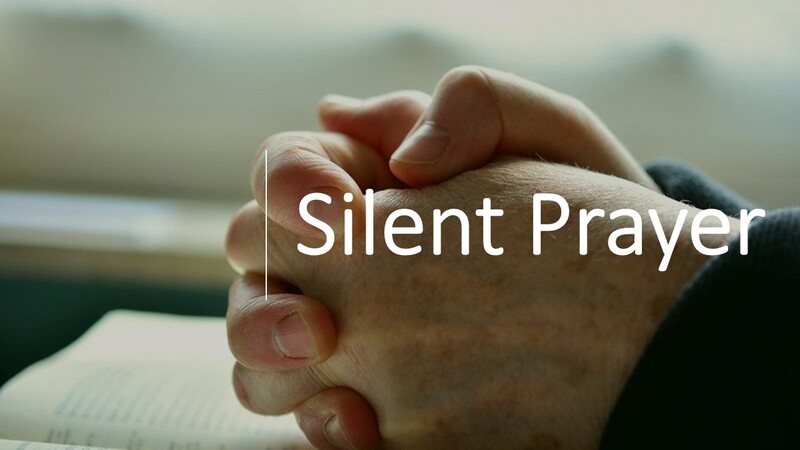Praying silently is the most powerful prayer technique available to us as Christians. Silent prayer is a beautiful and intimate way to connect with God.
In our noisy and busy lives, it can be hard to find moments of peace. Yet, peace is exactly what we need to recharge our spirits and reconnect with what truly matters. Silent prayer offers a simple, accessible path to this inner peace.
It’s a time when we can step away from the noise of the world and focus solely on our relationship with God.
What is Silent Prayer?
Silent prayer is simply prayer without spoken words. It’s a heartfelt communication with God that takes place within the quiet of our minds and hearts. This form of prayer can be practiced anywhere and at any time, making it a versatile and accessible spiritual tool.
It can be as simple as closing your eyes, taking a deep breath, and focusing your thoughts on God. There are no set rules or rituals.
The Biblical Basis for Silent Prayer
The Bible doesn’t specifically command us to pray silently, but it offers many examples of silent prayer in action.
- Jesus’ Example: Jesus often withdrew to quiet places to pray in solitude (Matthew 14:23).
- Hannah’s Prayer: In 1 Samuel 1, Hannah prayed silently in the temple for a child, and her request was granted.
- Nehemiah’s Prayer: Nehemiah silently prayed before King Artaxerxes, and the king granted him permission to rebuild Jerusalem’s walls (Nehemiah 2:4).
These examples demonstrate that silent prayer is a powerful way to seek God’s guidance, express our needs, and offer gratitude.
Benefits of Silent Prayer
Silent prayer offers numerous benefits for our spiritual well-being. Here are just a few:
- Deeper Connection with God: In silence, we can tune out distractions and focus more intently on God’s presence. This can lead to a deeper sense of intimacy and closeness with the Divine.
- Increased Clarity: Silent prayer can help us to quiet our minds and listen more attentively to God’s voice. This can bring clarity and understanding to our thoughts and feelings.
- Reduced Stress and Anxiety: Spending time in silent prayer can help us to release worry and anxiety. God’s peace can fill our hearts and minds as we rest in His presence.
- Greater Focus and Concentration: Silent prayer can improve our focus and concentration. By taking a break from external stimuli, we can renew our mental energy and return to our tasks with greater clarity and purpose.
- Enhanced Gratitude: Silent prayer can help us to cultivate a heart of gratitude. As we reflect on God’s goodness and blessings, our appreciation for Him deepens.
Examples of Silent Prayer Techniques
There are a variety of techniques that can be used to practice silent prayer. Here are a few examples:
Centering Prayer
Centering prayer is a simple, contemplative form of silent prayer that involves sitting quietly and focusing on a word or phrase, such as “peace” or “love.” The idea is to let go of all thoughts and distractions, and simply be present in the moment.
Breath Prayer
This technique involves focusing on your breath as you silently repeat a short prayer or phrase with each inhale and exhale. For example, you could silently say “Jesus, be with me” as you inhale, and “I trust in you” as you exhale.
Ignatian Contemplation
This is a form of prayer that involves using your imagination to place yourself in a scene from the Gospels, and then silently contemplating the scene and what it means for your life.
Lectio Divina
This ancient technique involves reading a short passage from the Scripture, and then silently meditating on it and listening for God’s voice. The idea is to let the words sink deep into your heart and to allow God to speak to you through them.
Body Prayer
This technique involves using your body to express your prayer, rather than your words. For example, you could sit in silence and hold your hands out in front of you, palms up, as a gesture of openness and surrender to God.
Each of these techniques can be a powerful way to deepen your connection with God and find inner peace through silent prayer. Try experimenting with each one to see which resonates most deeply with your heart and soul.
Practical Tips for Silent Prayer
Here are some tips for practicing silent prayer:
- Find a Quiet Place: Choose a location where you can be alone and free from distractions.
- Set Aside Dedicated Time: Even a few minutes of silent prayer each day can make a difference.
- Be Still: Take some deep breaths and relax your body. Let go of any tension or worry.
- Focus on God: Turn your attention to God and open your heart to His presence.
- Listen: Be open to hearing God’s voice through thoughts, feelings, or impressions.
- Express Yourself: Share your joys, concerns, and gratitude with God.
Conclusion
Silent prayer is a simple yet profound way to nurture our relationship with God. It’s a time to be still, listen, and receive God’s peace and guidance. As you incorporate silent prayer into your spiritual practice, you may be surprised at the positive impact it has on your life.
Remember the words of Psalm 46:10 (NIV): “Be still, and know that I am God.”
Remember: There’s no right or wrong way to pray silently. The most important thing is to come before God with a sincere heart and a desire to connect with Him.
